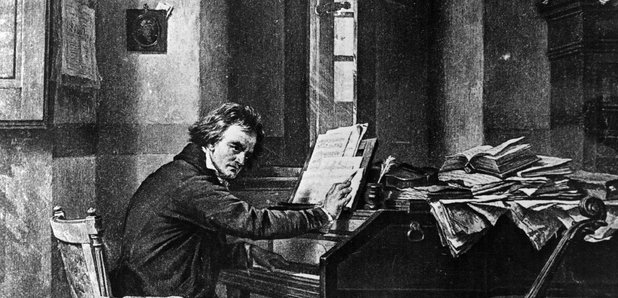|
||
|
The second symphony of Beethoven is frequently cited as a turning point in his output, marking the transition between the first and second epochs of his compositional style. It was also written at a clear turning point in his life. In the summer of 1802 Beethoven finally had to accept that his increasing deafness was incurable. From May to October he retired to Heiligenstadt, then a small country town but now a suburb of Vienna, to come to terms his condition. On the 6th October he signed and sealed his “Testament” which is in effect, a will, leaving his possessions to his brothers, Carl and Johann and giving quite specific instructions for the disposal of his musical instruments. An unresolved curiosity is that Johann’s name does not appear in the testament, though a blank space remains in two places for it to be filled in. In addition to its practical function the testament contains a very personal description of Beethoven’s grief and despair. He talks about his increasing isolation from society, his inability to ask people to speak louder and his sense of humiliation when he could not hear things that others talked about. He even alludes to the possibility of suicide, stating, “only it - my art - held me back”. The second symphony was written in the autumn of 1802 and completed before the end of the year. It was reported at the time that Beethoven made at least three complete versions of the symphony, but all that remains in his own hand are some sketches for the work. Perhaps the most remarkable thing about it is that it contains no trace of sorrow or self pity. In contrast it is full of drive, energy and exhilarating good humour. In every way Beethoven seemed to have come to terms with his deafness and was continuing on his career as a composer with more resolve and determination than had been seen before. On the surface the symphony is fairly conventional in its use of form and in the orchestral forces employed. It looks back to the last symphonies of Mozart and Haydn, and yet there are things about it that are quite new. At its first performance it was the longest symphony ever written, a distinction it did not hold for long as the Eroica symphony, written the following year, was almost fifteen minutes longer. Much of the innovation can be found in the methods Beethoven devised to scale up the work. The slow introduction to the first movement is longer than any other previously written, and kept alive by passages of dialogue between the instruments and subtle harmonic shifts. The allegro is extended by the addition of more developmental ideas than would have occurred in earlier symphonies. Even in the exposition Beethoven manages some extraordinary shifts of key to superb dramatic effect. Sudden changes of dynamic enhance the drama and the writing for the strings is often brilliant and colouristic. The violins frequently soar to high repeated notes while the lower string and winds play the melody and harmony. The second movement opens with a gentle and lyrical section in which several melodic ideas flow around the orchestra occasionally punctuated by forte chords. This material is developed and elabourated with remarkable dexterity. Sometimes a melody appears accompanied by fast decorative figures and sometimes in a darker hue created by a change of harmony. Fragments appear in dialogue building to a short dramatic climax then fading away again. The third movement is a scherzo and trio, replacing the more traditional minuet and trio. It is a highly individual movement with dramatic changes in dynamic and humorous dialogue between the instruments. The trio is gentler. It starts in the same key (D major) as the scherzo but leaps precipitately into F sharp major for the middle section. The finale puzzled musicians and critics of the day who described it as harsh, wild, bizarre and capricious. Movements of such force and dynamism were unheard of in those days. Like the first movement it is in sonata form, but with developmental ideas occurring throughout. The first performance of the second symphony took place in Vienna on 5th April 1803. The programme, all works by Beethoven, also included the first symphony, the third piano concerto and an oratorio called the Christ on the Mount of Olives. The famous Victorian musicologist George Grove most cleverly summed up the second symphony of Beethoven in an anonymous couplet: “Two worlds at once they view Beethoven's second symphony was performed by the Portobello orchestra on the 8th July 2006. The conductor was Anthony Weeden. back |

